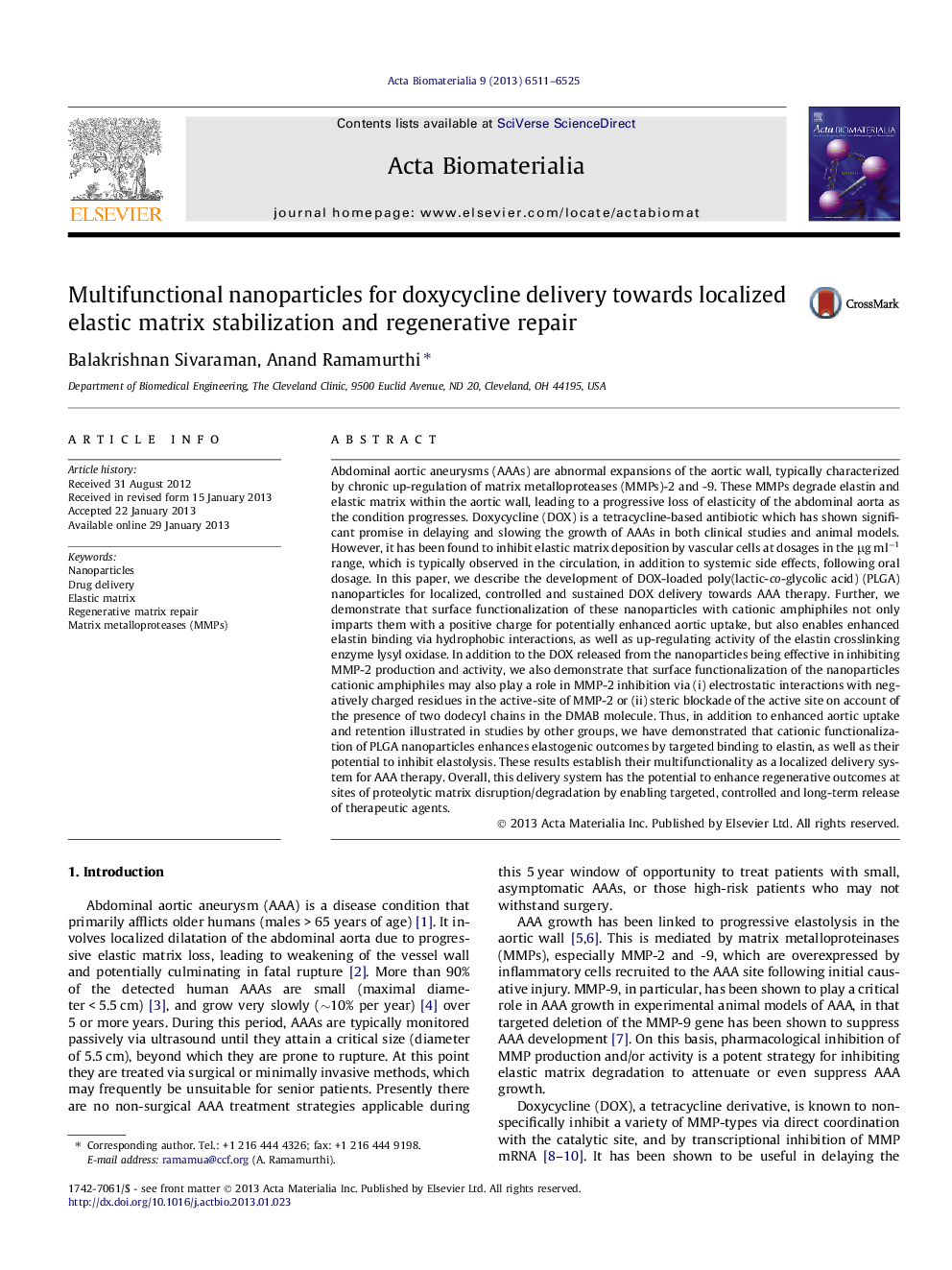| Article ID | Journal | Published Year | Pages | File Type |
|---|---|---|---|---|
| 10159921 | Acta Biomaterialia | 2013 | 15 Pages |
Abstract
Abdominal aortic aneurysms (AAAs) are abnormal expansions of the aortic wall, typically characterized by chronic up-regulation of matrix metalloproteases (MMPs)-2 and -9. These MMPs degrade elastin and elastic matrix within the aortic wall, leading to a progressive loss of elasticity of the abdominal aorta as the condition progresses. Doxycycline (DOX) is a tetracycline-based antibiotic which has shown significant promise in delaying and slowing the growth of AAAs in both clinical studies and animal models. However, it has been found to inhibit elastic matrix deposition by vascular cells at dosages in the μg mlâ1 range, which is typically observed in the circulation, in addition to systemic side effects, following oral dosage. In this paper, we describe the development of DOX-loaded poly(lactic-co-glycolic acid) (PLGA) nanoparticles for localized, controlled and sustained DOX delivery towards AAA therapy. Further, we demonstrate that surface functionalization of these nanoparticles with cationic amphiphiles not only imparts them with a positive charge for potentially enhanced aortic uptake, but also enables enhanced elastin binding via hydrophobic interactions, as well as up-regulating activity of the elastin crosslinking enzyme lysyl oxidase. In addition to the DOX released from the nanoparticles being effective in inhibiting MMP-2 production and activity, we also demonstrate that surface functionalization of the nanoparticles cationic amphiphiles may also play a role in MMP-2 inhibition via (i) electrostatic interactions with negatively charged residues in the active-site of MMP-2 or (ii) steric blockade of the active site on account of the presence of two dodecyl chains in the DMAB molecule. Thus, in addition to enhanced aortic uptake and retention illustrated in studies by other groups, we have demonstrated that cationic functionalization of PLGA nanoparticles enhances elastogenic outcomes by targeted binding to elastin, as well as their potential to inhibit elastolysis. These results establish their multifunctionality as a localized delivery system for AAA therapy. Overall, this delivery system has the potential to enhance regenerative outcomes at sites of proteolytic matrix disruption/degradation by enabling targeted, controlled and long-term release of therapeutic agents.
Related Topics
Physical Sciences and Engineering
Chemical Engineering
Bioengineering
Authors
Balakrishnan Sivaraman, Anand Ramamurthi,
